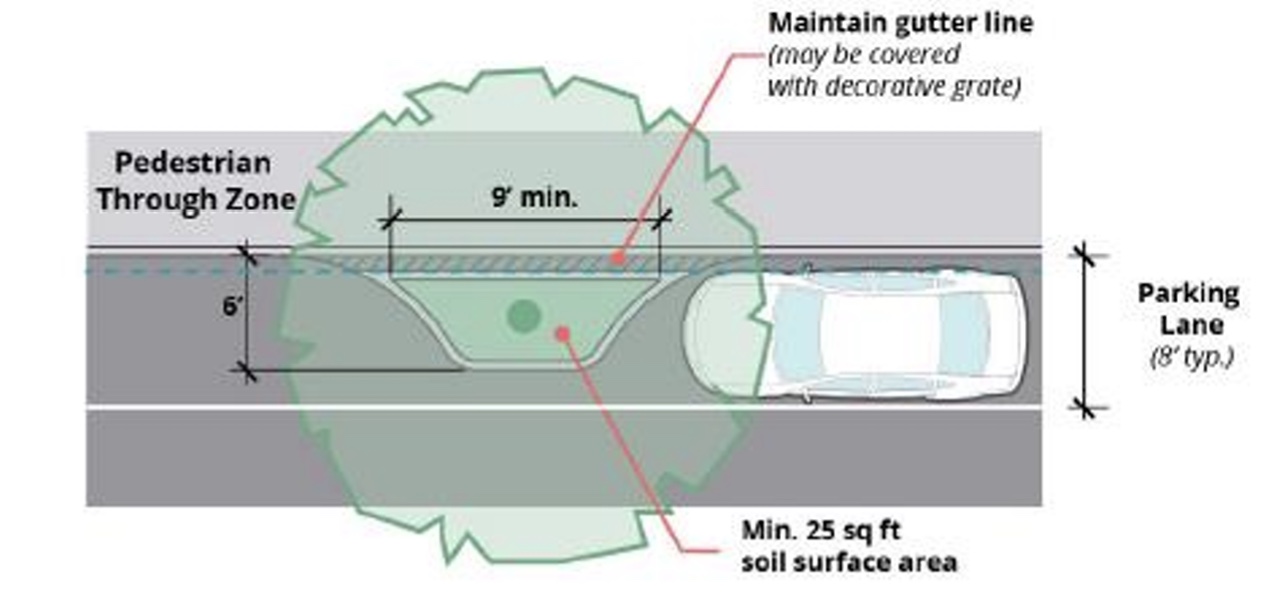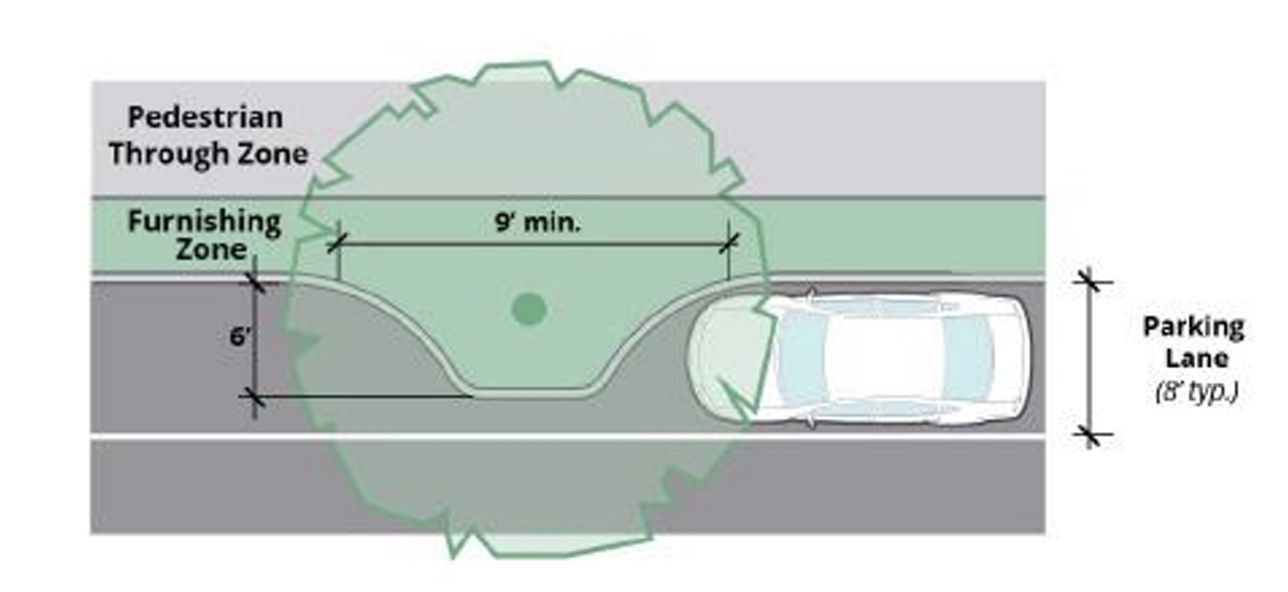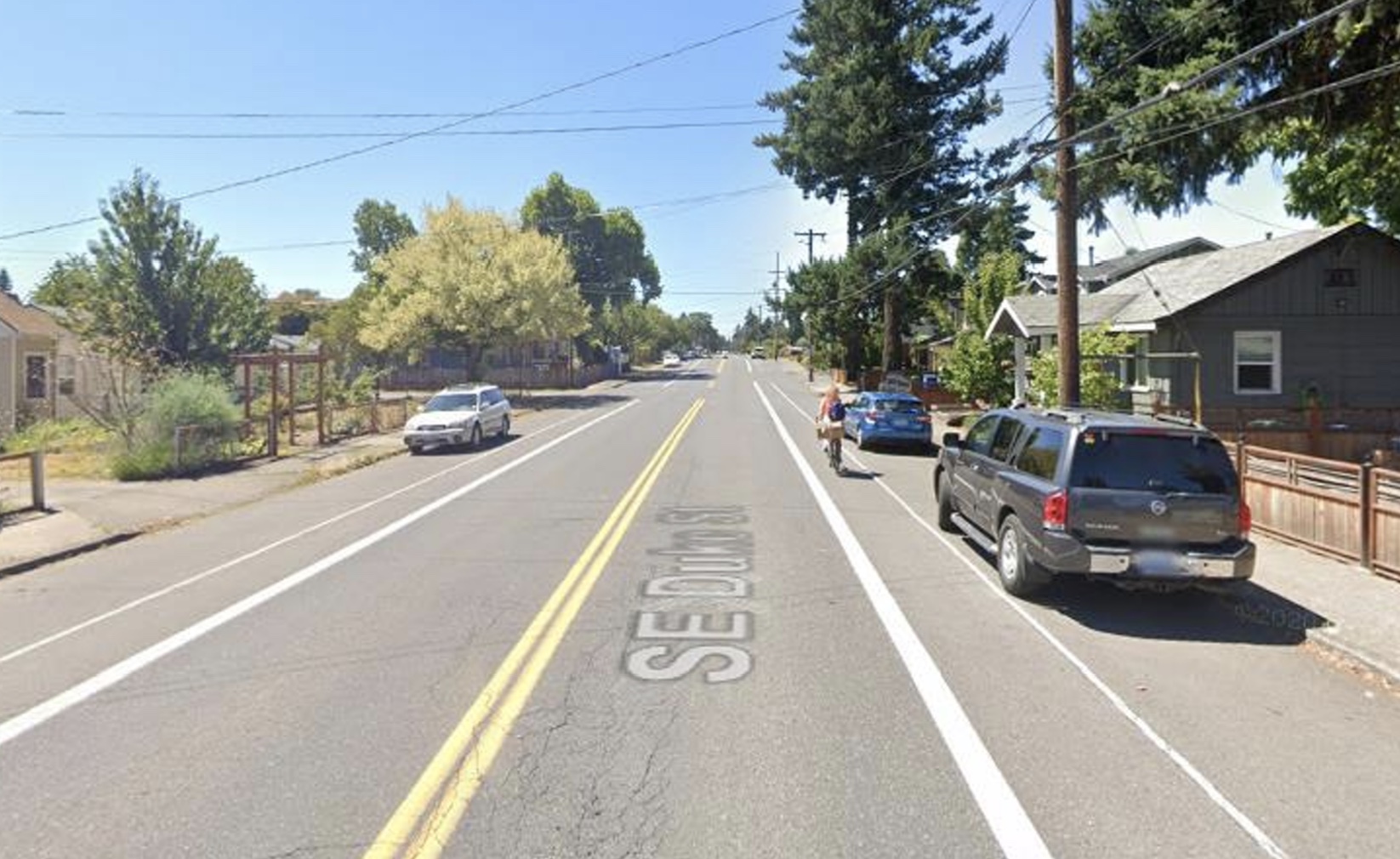“If you don’t do something like this, these trees aren’t happening.”
-Gena Gastaldi, PBOT
Good news for Joni Mitchell and fans of sustainable city planning in Portland: the Portland Bureau of Transportation is considering depaving paradise and trading parking spaces for trees.
Though many neighborhoods in Portland’s central city are as green as can be, this isn’t the case everywhere. Tree canopy coverage is unevenly distributed across the city, with people in wealthier parts of Portland benefitting the most from dense urban forestry that lower-income neighborhoods are largely devoid of. As climate change continues making our summers hotter and the cooling effect of urban forests becomes even more palpable, the disparity between the tree haves and have-nots will be more apparent. Climate justice advocates have called on the city to make sure all Portlanders have access to trees, and planners have begun to include more greenery in their blueprints for new street designs, especially in lower-income parts of the city where concrete is king (like 122nd Ave).
At yesterday evening’s Portland Pedestrian Advisory Committee (PAC) meeting, PBOT’s Interim Pedestrian Coordinator Gena Gastaldi gave a rundown of a new city street tree pilot project.


This pilot plan, a collaboration between PBOT, Portland Parks & Recreation’s Urban Forestry team and the Bureau of Environmental Services, aims to “develop a framework for tree planting in the curb zone.” It will be funded through a $500,000 grant awarded to PBOT by the Bureau of Environmental Service’s Percent for Green program, which uses a percentage of development charges to fund green infrastructure projects that “provide broad benefits for watershed health and the community.” The pilot is part of the recently-updated Pedestrian Design Guide, which has a large section dedicated to improving tree canopy coverage on Portland’s streets.
But beefing up canopy coverage is more complicated than just taking a shovel to the dirt. Particularly in the most car-dominant parts of the city (which are also often the poorest), sidewalks are narrow and there often isn’t enough room for trees. To confront this challenge, PBOT’s pilot would take tree planting beyond the limited sidewalk furnishing zone and into spaces previously reserved for cars.
PBOT has recently faced backlash from people threatened by their plans to reallocate on-street parking, notably on NW Overton, where the agency ended up scrapping an already-built bikeway to reinstall parking spots. It’s apparent they’re wary of this happening again and want to get ahead of any controversy: documents outlining this plan clarify that turning some parking spaces into habitats for trees is essentially a last resort for fitting greenery into tight spots, and Gastaldi said PBOT will practice restraint with on-street parking conversion.
“We’re not talking about getting rid of all the parking. We’re talking about strategically reallocating some of that space,” Gastaldi said at yesterday’s PAC meeting. “If you don’t do something like this, these trees aren’t happening.”


You can see examples of these curb extension planting zones in several places around Portland, such as near Director Park downtown and on SE Hawthorne near 46th Ave. But these were created as one-off projects with no intent to replicate them elsewhere. Now, PBOT and BES are going bigger with their plan.
In addition to the benefits trees provide for on-street cooling (and more), one important point PBOT makes is that street trees have proven valuable as a traffic calming enhancement. This is true: studies have shown the presence of trees improves traffic safety by encouraging drivers to slow down – similar to the calming effects of on-street artwork, but with more photosynthesis – and this effect can be amplified by planting them outside of the sidewalk and in the street itself. (This is one reason people were so angry about PBOT removing the tree from the traffic circle at SE 7th and Tillamook.)
Right now, planners are still determining where to first focus their tree-planting efforts, but it will likely first take off somewhere in the greenery-starved neighborhoods in outer southeast. They may tie this pilot into the Lower SE Rising Area Plan in the Brentwood Darlington neighborhood, utilizing the community engagement efforts already underway for that plan to also get public input on the street trees project.
The planning and engagement process will take place through the rest of this year and next year, with construction starting in 2024. You can find out more about the plan here – we’ll keep you posted on more details when they’re available.



